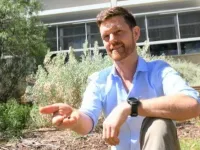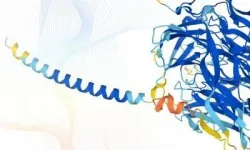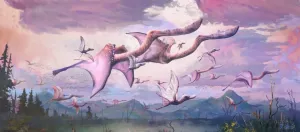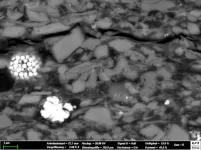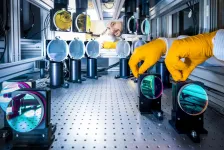(Press-News.org) Restoration of degraded drylands is urgently needed to mitigate climate change, reverse desertification and secure livelihoods for the two billion people who live there, experts warn in a major new paper in Nature Ecology & Evolution.
Scientists leading the Global Arid Zone Project examined restoration seeding outcomes at 174 sites on six continents, encompassing 594,065 observations of 671 plant species - with the lessons learned important to meeting ambitious future restoration targets.
Flinders University Dr Martin Breed, one of three Australian researchers who helped coordinate data collection for the live database, says the new paper is really important for Australia.
"Much of Australia is drylands and huge areas of these drylands in Australia are degraded," he says. "They have been cleared, unsustainably farmed, burnt in megafires and generally not taken good care of. Accordingly, vast areas of our drylands are now being restored to help return biodiversity and supply many important ecosystem services, such as clean air and water, supporting our good mental health and increasing agricultural productivity.
"This restoration usually requires revegetation, primarily via re-seeding areas.
"The scale of this re-seeding effort globally is truly enormous, encouraged no less by the UN Decade on Ecosystem Restoration that started this year. The annual budgets involved are in the 10s to 100s billions of dollars," Dr Breed says.
"This research lays a solid foundation to innovate new ways to effectively re-seed areas.
"It brings together a global understanding of how effective this re-seeding is in these drylands. It shows that re-seeding generally works - if you sow the seeds, the plant has a good chance of being there in the future.
"However, re-seeding is really risky, with almost 20% of seeding events failing. Alarmingly, this risk increased as areas were more arid - and with the realised and predicted increases in aridity with climate change, this does not bode well for seed-based restoration in drylands."
The Nature Ecology & Evolution article says there are reasons for optimism, even though the global targets set for dryland restoration to restore millions of hectares of degraded land have been questioned as overly ambitious.
But without a global evaluation of successes and failures it is impossible to gauge feasibility, the researchers say, pointing out:
Seeding had a positive impact on species presence: in almost a third of all treatments, 100% of species seeded were growing at first monitoring.
However, dryland restoration is risky: 17% of projects failed, with no establishment of any seeded species, and consistent declines were found in seeded species as projects matured.
Across projects, higher seeding rates and larger seed sizes resulted in a greater probability of recruitment, with further influences on species success including site aridity, taxonomic identity and species life form.
The findings suggest that investigations examining these predictive factors will yield more effective and informed restoration decision-making.
INFORMATION:
Lead investigators in the Global Arid Zone Project are Assistant Professor Nancy Shackelford, Restoration of Natural Systems Director at University of Victoria, British Columbia, Canada (@drylandrestore) and Professor Katharine Suding, Colorado University at Boulder.
Dr Gustavo Paterno, Universidade Federal do Rio Grande do Norte, Brazil was corresponding lead author on the new paper with Dr Shackelford.
In Australia, Dr Martin Breed (Flinders University), Dr Todd Erickson (University of Western Australia) and Dr Peter Harrison (University of Tasmania) are collaborating on the steering committee of the Global Arid Zone Project.
The article, Drivers of seedling establishment success in dryland restoration efforts (23 July 2021) by Nancy Shackelford, Gustavo B Paterno, Daniel E Winkler, Todd E Erickson, Elizabeth A Leger, Lauren N Svejcar, Martin F Breed, Akasha M Faist, Peter A Harrison, Michael F Curran, Qinfeng Guo, Anita Kirmer, Darin J Law, Kevin Z Mganga, Seth M Munson, Lauren M Porensky, R Emiliano Quiroga, Péter Török, Claire E Wainwright, Ali Abdullahi, Matt A Bahm, Elizabeth A Ballenger, Nichole Barger, Owen W Baughman, Carina Becker, Manuel Esteban Lucas-Borja, Chad S Boyd, Carla M Burton, Philip J Burton, Eman Calleja, Peter J Carrick, Alex Caruana, Charlie D Clements, Kirk W Davies, Balázs Deák, Jessica Drake, Sandra Dullau, Joshua Eldridge, Erin Espeland, Hannah L Farrell, Stephen E Fick, Magda Garbowski, Enrique G de la Riva, Peter J Golos, Penelope A Grey, Barry Heydenrych, Patricia M Holmes, Jeremy J James, Jayne Jonas-Bratten, Réka Kiss, Andrea T Kramer, Julie E Larson, Juan Lorite, C Ellery Mayence, Luis Merino-Martín, Tamás Miglécz, Suanne Jane Milton, Thomas A Monaco, Arlee M Montalvo, Jose A Navarro-Cano, Mark W Paschke, Pablo Luis Peri, Monica L Pokorny, Matthew J Rinella, Nelmarie Saayman, Merilynn C Schantz, Tina Schroeder, Eric W Seabloom, Katharine L Stuble, Shauna M Uselman, Orsolya Valkó, Kari Veblen, Scott Wilson, Megan Wong, Zhiwei Xu and Katharine L Suding has been published in Nature Ecology & Evolution DOI: 10.1038/s41559-021-01510-3
LONDON, 22 July 2021 - DeepMind today announced its partnership with the European Molecular Biology Laboratory (EMBL), Europe's flagship laboratory for the life sciences, to make the most complete and accurate database yet of predicted protein structure models for the human proteome. This will cover all ~20,000 proteins expressed by the human genome, and the data will be freely and openly available to the scientific community. The database and artificial intelligence system provide structural biologists with powerful new tools for examining a protein's three-dimensional structure, and offer a treasure trove of data that could unlock future advances and herald a new era for AI-enabled biology.
AlphaFold's recognition in December 2020 by the ...
Newly-hatched pterosaurs may have been able to fly but their flying abilities may have been different from adult pterosaurs, according to a new study.
Pterosaurs were a group of flying reptiles that lived during the Triassic, Jurassic and Cretaceous Periods (228 to 66 million years ago). Due to the rarity of fossilised pterosaur eggs and embryos, and difficulties distinguishing between hatchlings and small adults, it has been unclear whether newly-hatched pterosaurs were able to fly.
Researchers from the Universities of Portsmouth and Bristol, along with palaeontologist Darren Naish, found that hatchling humerus bones were stronger than those of many adult pterosaurs, indicating ...
The Alum Shale of Northern Europe not only has an eventful history of formation, connected with the microcontinent Baltica, it also holds great potential as an object of investigation for future research questions. Geologists use the rock to reconstruct processes of oil and gas formation, and even possible traces of past life on Mars can be identified with its help. Researchers at the German Research Centre for Geosciences Potsdam GFZ, together with colleagues from Canada, China, Switzerland and Denmark, have summarised the state of knowledge about the multi-layered rock. Their article was published in July in the journal Earth-Science Reviews.
The Microcontinent Baltica
"This rock tells a story," says Hans-Martin Schulz when he talks about the Northern European Alum Shale. It is ...
Astronomers using two of the world's most powerful radio telescopes have made a detailed and sensitive survey of a large segment of our home galaxy -- the Milky Way -- detecting previously unseen tracers of massive star formation, a process that dominates galactic ecosystems. The scientists combined the capabilities of the National Science Foundation's Karl G. Jansky Very Large Array (VLA) and the 100-meter Effelsberg Telescope in Germany to produce high-quality data that will serve researchers for years to come.
Stars with more than about ten times the mass of our Sun are important components of the Galaxy ...
Around 470 million years ago, plants began to conquer the terrestrial surfaces. The first examples had a small axis terminated by a structure capable of forming spores, almost like current mosses. The appearance of plant organs mediated the explosive radiation of land plants, which shaped the surface of our planet and allowed the establishment of terrestrial animal life.
However, evolving such a diversity of organs, such as roots, leaves, or immobile gametes, requires coordinated genetic changes: rise of new genes, repurpose of genetic material, and development of new regulatory programs. In a study published in Nature Plants, a consortium ...
A new study increases knowledge of the genetics behind aortic aneurysm, a disease that can spark life-threatening events like aortic dissections and ruptures.
University of Michigan Health-led researchers compared blood samples from more than 1,300 people who had a thoracic aortic aneurysm with more than 18,000 control samples, in partnership with U-M's Cardiovascular Health Improvement Project and its Michigan Genomics Initiative.
"After examining nearly the entire human genome for genetic changes that increase risk of aneurysm, we discovered a new change in the genetic code of a transcription factor, ...
Around 50,000 people suffer sudden cardiac arrest in Germany every year. When occurring outside a hospital, the chances of survival are only ten percent. Survivors often suffer from severe permanent neurological damage. On July 21st, 2021, researchers from the Faculty of Medicine - University of Freiburg, Germany, published together with German and US colleagues a review article in the journal Nature Reviews Neuroscience. They describe the most important therapeutic factors for successful resuscitation. The scientists name the therapy concept based on these factors ...
Key Takeaways
A survey of American College of Surgeons members found almost two-thirds treat firearm injuries and more than 85 percent support the organization advocating for policies to reduce firearm-related injuries.
Forty-two percent of ACS members keep firearms in their homes and nearly one-third (32 percent) of surgeon firearm owners store firearms unlocked and loaded.
Survey findings will enable the ACS to identify ways to engage all members, including gun owners, and advocate for initiatives that prevent firearm-related injuries.
CHICAGO (July 22, 2021): In what may be the largest survey of physician attitudes about firearms and how firearm-owning surgeons store guns in their homes, U.S. members of the American College of Surgeons ...
Scientists at Cambridge and Leeds have successfully reversed age-related memory loss in mice and say their discovery could lead to the development of treatments to prevent memory loss in people as they age.
In a study published today in Molecular Psychiatry, the team show that changes in the extracellular matrix of the brain - 'scaffolding' around nerve cells - lead to loss of memory with ageing, but that it is possible to reverse these using genetic treatments.
Recent evidence has emerged of the role of perineuronal nets (PNNs) in neuroplasticity - the ability of the brain to learn and adapt - and to make memories. ...
In the depths of space, there are celestial bodies where extreme conditions prevail: Rapidly rotating neutron stars generate super-strong magnetic fields. And black holes, with their enormous gravitational pull, can cause huge, energetic jets of matter to shoot out into space. An international physics team with the participation of the Helmholtz-Zentrum Dresden-Rossendorf (HZDR) has now proposed a new concept that could allow some of these extreme processes to be studied in the laboratory in the future: A special setup of two high-intensity laser beams could create conditions similar to those found near neutron stars. In ...
